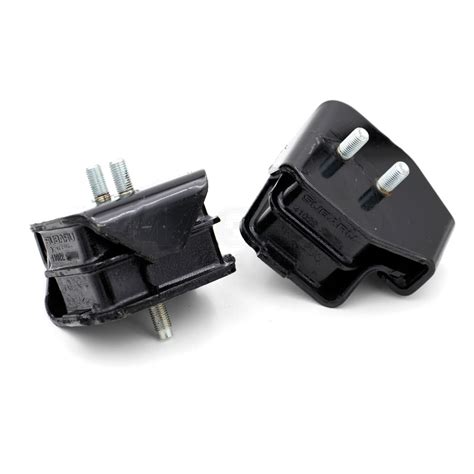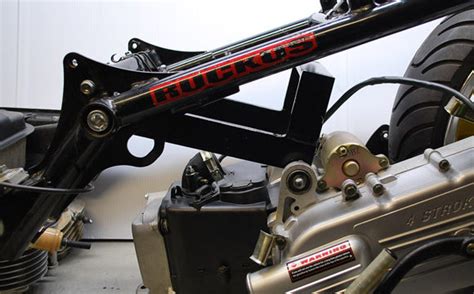Discover the function, benefits, and maintenance tips for hydraulic engine mounts, along with common issues to watch out for in your vehicle.When it comes to vehicle performance and comfort, the often-overlooked hydraulic engine mount plays a crucial role. This component not only secures the engine to the chassis but also absorbs vibrations and impacts, creating a smoother driving experience. Understanding what a hydraulic engine mount is and how it works can empower car owners to appreciate its significance in their vehicles. In this post, we’ll explore the functionality and benefits of hydraulic engine mounts, highlight common issues that may arise, and provide essential tips for maintaining them. Whether you’re a car enthusiast or simply looking to enhance your vehicle’s longevity, this guide will equip you with the knowledge you need to keep your engine mounts in optimal condition.
What is a hydraulic engine mount?
A hydraulic engine mount is a type of mounting device used in vehicles to secure the engine to the chassis while also allowing for a degree of movement and vibration dampening, which demonstrates its unique engineering design as it utilizes fluid-filled chambers that control the engine’s movements and absorb vibrations that occur during the operation of the vehicle.
These mounts are designed to provide stability under various conditions, ensuring that the engine remains securely connected to the frame of the car while also enhancing the comfort of the ride by minimizing excessive noise and vibrations that can cause discomfort to passengers, and they frequently come with varying levels of stiffness, designed to optimize performance based on specific vehicle applications.
Ultimately, the importance of a hydraulic engine mount cannot be understated, as it plays a crucial role in enhancing vehicle performance, comfort, and durability, making it essential for both everyday driving scenarios and high-performance applications.
How does a hydraulic engine mount work?
The hydraulic engine mount is a crucial component in modern vehicles that plays a significant role in optimizing engine performance and enhancing the overall driving experience, as it is designed to support the engine while simultaneously minimizing vibrations and noise transmitted to the vehicle’s chassis, thereby contributing to a smoother ride.
To achieve its function, the hydraulic engine mount utilizes a hydraulic fluid-filled chamber, which allows the engine to absorb and dampen vibrations caused by the engine’s operation, and within this system, the engine is secured to the vehicle frame using a combination of rubber and metal components that work together to create a resilient yet flexible mount.
Furthermore, as the engine operates, the hydraulic fluid within the mount is displaced due to the engine’s movements, which ultimately allows for the necessary support while providing an adaptive response to varying operating conditions; this mechanism not only improves comfort for passengers and reduces wear on other vehicle components, but also plays a critical rol
Benefits of using a hydraulic engine mount
One of the most significant benefits of using a hydraulic engine mount lies in its ability to effectively absorb vibrations and impacts, resulting in a smoother driving experience for both the driver and the passengers, as this innovative automotive component is designed to mitigate engine vibrations that would otherwise transfer to the vehicle’s cabin, thus enhancing passenger comfort and reducing fatigue during long journeys.
Moreover, the unique construction of a hydraulic engine mount contributes not only to reduced noise levels but also plays a pivotal role in improving engine stability and alignment, thereby ensuring that the engine operates optimally, which could potentially lead to improved fuel efficiency and overall vehicle performance, a factor that many car enthusiasts take seriously.
Additionally, the flexibility offered by a hydraulic engine mount in accommodating the engine’s movements—due to acceleration, deceleration, and cornering—is essential for enhancing vehicle handling characteristics, as it allows the engine to shift slightly in response to driving conditions without negatively impacting the drivetrain integrity, thereby providing a seamless connection between the engine and the vehicle’s wheels.
Common issues with hydraulic engine mounts
The hydraulic engine mount plays a crucial role in ensuring the smooth operation of a vehicle’s engine by dampening vibrations and providing support; however, like any component in a car, it can experience various issues that may compromise its efficiency and longevity. One of the most common problems encountered with hydraulic engine mounts is fluid leakage, which typically occurs due to degradation of the rubber or seal over time, causing the hydraulic fluid inside to escape and consequently diminishing the mount’s ability to absorb vibrations effectively.
Another prevalent issue is wear and tear, as the continuous exposure to engine vibrations and heat can lead to the deterioration of the mount material, resulting in cracks and reduced structural integrity; thus, it is essential to monitor the condition of these mounts regularly. Additionally, abnormal noise during vehicle operation may indicate a problem with the hydraulic engine mount, as such sounds often arise from the mount not effectively holding the engine in place, which can lead to vibrations being transmitted to the vehicle’s chassis.
In some cases, misalignment can occur if the engine is not properly positioned, causing additional stress on the hydraulic mount, so it is advisable to have a professional inspect your vehicle if you suspect any misalignment issues. To address these concerns and maintain optimal performance, vehicle owners should be aware of the symptoms of failing hydraulic engine mounts, such as excessive vibrations, noise, or even noticeable movement of the engine during acceleration or deceleration, and take proactive measures to resolve the issues through timely inspections and replacements.
Tips for maintaining hydraulic engine mounts
To ensure that your hydraulic engine mounts perform optimally and have a long lifespan, it is crucial to adhere to several important maintenance practices, which not only enhance performance but also provide peace of mind against unexpected engine vibrations or noises.
Regularly inspecting the hydraulic engine mounts for signs of wear, such as cracks, leaks, or rubber deterioration is vital, since any visible damage can lead to severe engine vibrations that may jeopardize other vehicle components, hence it’s essential to schedule these inspections periodically, ideally during routine service checks.
In addition to visual inspections, monitoring the fluid levels within the hydraulic engine mounts is necessary, as low fluid levels can significantly impair their functionality; replacing old or contaminated hydraulic fluid can also be beneficial in maintaining the mounts’ effectiveness, ensuring they can absorb engine vibrations efficiently.
It is essential to consult your vehicle’s owner manual for specific guidance on maintenance intervals, as it typically contains valuable information tailored to your car’s model and specifications, allowing you to better understand how to care for your hydraulic engine mounts while also enhancing overall vehicle performance.
By following these maintenance tips, you can greatly extend the lifespan of your hydraulic engine mounts and ensure a smoother and quieter driving experience.
Frequently Asked Questions
What is a hydraulic engine mount?
A hydraulic engine mount is a component used to secure an engine to the vehicle’s frame. It uses fluid-filled chambers to absorb vibrations and reduce engine noise.
How does a hydraulic engine mount work?
Hydraulic engine mounts function by employing hydraulic fluid to cushion the engine’s movement during operation, minimizing vibration and providing stability.
What are the benefits of using hydraulic engine mounts?
The benefits include improved ride comfort, reduced noise, better engine control, and enhanced overall safety by securely holding the engine in place.
How can I tell if my hydraulic engine mount is failing?
Signs of a failing hydraulic engine mount include increased engine vibration, noticeable noise from the engine, misaligned engine placement, or visible damage to the mount itself.
Are hydraulic engine mounts maintenance-free?
While hydraulic engine mounts are generally low maintenance, they can wear out over time. Regular vehicle checks can help identify issues before they become serious.
What should I do if I need to replace my hydraulic engine mount?
If you need to replace your hydraulic engine mount, it is recommended to consult a professional mechanic to ensure proper installation and to choose the right mounting type for your vehicle.
Can I install a hydraulic engine mount myself?
While it is possible to install a hydraulic engine mount yourself if you have experience with car repairs, it is often best to seek professional assistance to ensure proper installation and safety.





